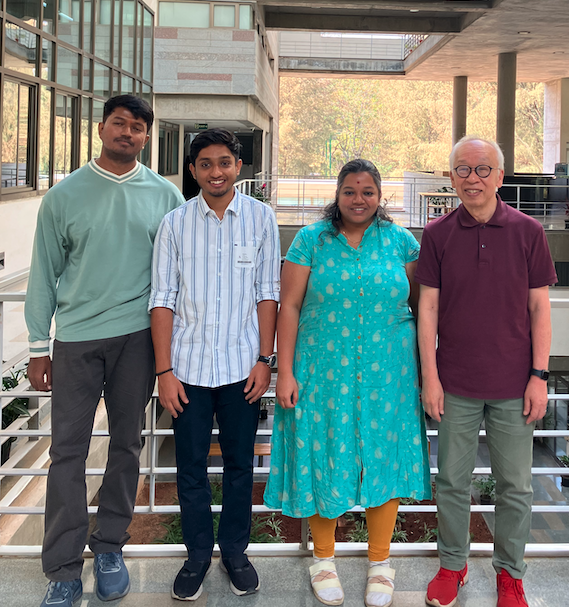NCBS recently wrapped up the NCBS RIKEN-BDR meeting. This meeting was spearheaded by Prof. Hiroshi Hamada, Senior Visiting Professor, NCBS & Ashoka Distinguished Visiting Fellow. The meeting helped foster scientific collaboration and greater appreciation for the research being done at both the centres. It further opened up new doors for more joint programs and scientific exchange. I talk to Prof. Hiroshi Hamada about his time at NCBS, his research, and his interest in furthering India-Japan scientific relations.
1. What brought you to India and NCBS?
My love for science in the simplest terms. The first time that I came to India was to NCBS about 12 years ago. The collaborative environment and state of the art facilities make for an exciting out of the box space for research. After my retirement in Japan, I was still looking to be at the bench and make discoveries. Vijay (Prof. K VijayRaghavan) and Shashi (Prof. L.S. Shashidhara) had been instrumental in setting up collaborations between NCBS and RIKEN, Japan (where I used to work earlier). They encouraged me to come pursue science at NCBS, keeping with the collaborative spirit.
2. What is your current research focus?
Animals have three body axes-left-right, dorsal-ventral (back to front) and anterior-posterior (top to bottom). Different organs in our bodies are present either at the left or the right side of our body-also called the left-right asymmetry. In certain developmental disorders, body parts get displaced. I look at how the left-right body axis is established. One of the key determinants of the left/right axis is the signaling protein Nodal, which is expressed in the left side of the embryo. Its expression also induces the anterior/posterior body axis. The protein binds to its receptor to turn on a signaling cascade that is crucial to establish the left-right body axis. Disrupted Nodal signaling in mammals can result in delayed development of organs, congenital heart defects and birth defects. In Japan, I used the mouse model system to study the left-right body axis. At NCBS the idea was to study the left-right body axis with a focus on Nodal in different organisms. We are now working on freshwater snails and chick. As for snails, their left-coiled or right-coiled shells make them an interesting organism to study the body axis. Our primary research question is to determine the specific location and developmental stage in the snail embryo where Nodal expression occurs. We are interested in mechanisms involved in chirality (left-right handedness) in snails. Though the whole genome sequence of this snail is available from a lab in France there are lots of differences between the sequences of the snails that we use and the available sequence. However, we now have molecular tools to study how snail Nodal is involved in the development of chirality.My research is collaborative in nature. I collaborate with ecologists, geneticists and developmental biologists in the hope of comparing the development of the left-right axis across different organisms. I am really grateful for the amazing support from researchers such as Vijay and Sonia (Dr. Sonia Sen, TIGS), and scientific staff at the collections and animal house facility at BLiSC. With the scientific staff at the collections facility and animal house facility, we have been able to house sinistral and dextral snails.
3. We recently hosted the NCBS-RIKEN/BDR meeting. How do you think this meeting would help research at both centres?
Both centres have been keen on scientific collaborations. This is the first meeting that provided researchers from both the institutes an opportunity to discuss exciting and new research ideas. We also hope to develop student exchange programs. The idea is to have the best of both worlds; to bring together scientists with similar yet diverse interests.
For information of Prof. Hamada’s research at NCBS: https://www.ncbs.res.in/visiting-faculty/hiroshi









0 Comments